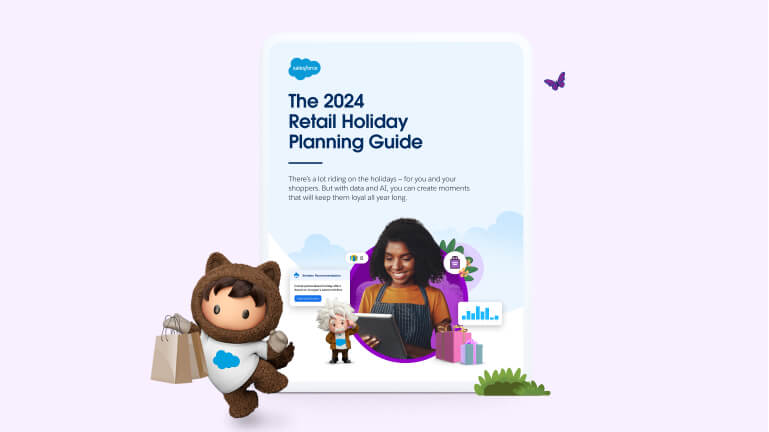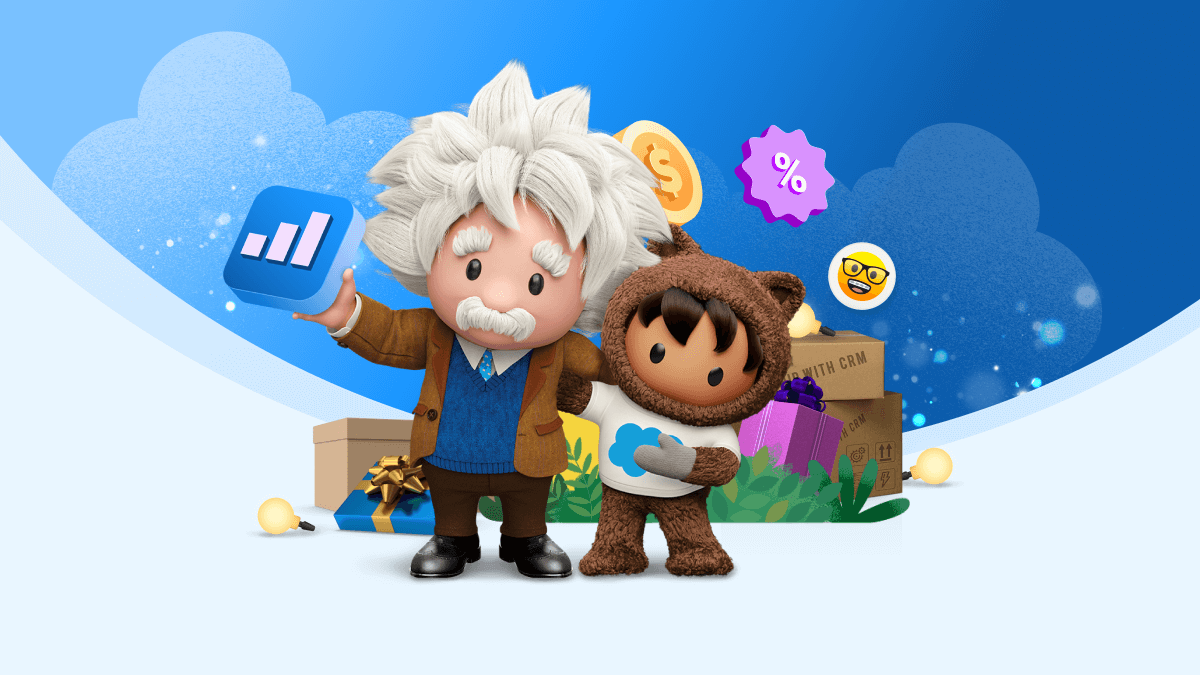We can’t say shoppers didn’t warn us. Since the start of the year, they’ve been searching for savings and waiting to make big purchases. After remaining largely resilient throughout four years of economic uncertainty, consumers are finally feeling the pinch. From sustained inflation to supply chain woes, consumers worldwide have been through a lot.
We took a look at current shopping data to see how holiday shopping could shape up this year as consumers are spending more, buying less, and seeking value.
Make every day a holiday
Unwrap The 2024 Retail Holiday Planning Guide to learn our top tips for winning shoppers’ hearts and wallets during peak shopping moments all year long.



Here are our 2024 holiday shopping predictions
- Chinese shopping apps will take market share
- Middle-mile shipping puts strain on margins
- Shoppers embrace AI to search for the perfect gift
- Black Friday becomes Cyber Friday
- Retailers tap loyal shoppers to avoid skyrocketing digital marketing costs
What’s behind the numbers?
Aligning with global trends, Australian households are taking on more debt, accumulating a total of $2.66 trillion of personal debt nationwide. In June 2024, the average balance per credit card in Australia was $3084, up from $2903 the year prior.
According to Salesforce research, 37% of global shoppers say they’re using their credit cards more today than they were a year ago, while 32% report using alternative credit services like “buy now, pay later” more frequently. What’s more, 43% of consumers are carrying more debt compared to 2023. And this isn’t unique to one income bracket — consumers across all levels are tapping into their credit lines more today than they were last year.
But this increased reliance on credit isn’t due to consumers buying more. According to the Salesforce Shopping Index, online order volumes have been falling since 2022 and decreased by 2% year over year in the first quarter of this year. In fact, 47% of shoppers say they are buying the same amount, while 40% are buying less compared to last year.
When they do buy, they’re trading down, buying discounted merchandise, and seeking private labels. Only 15% of consumers reported making no tradeoffs based on price. Consumers’ credit balances are increasing because they’re offloading inflation onto high interest credit cards.
To balance this risk, consumers are saving more than ever. When asked to rank where their disposable income is going, most consumers said savings is their top priority, followed by physical goods, with experiences coming last. This is in marked contrast to last year when savings ranked last behind physical goods and experiences.
Let’s take a closer look at the data, along with our top tips for your most wonderful time of the year.
Merry and Bright Holiday Planning
Holiday shopping prediction #1: Chinese shopping apps will take market share
As Australian consumers face uncertainty around rising prices, they’re changing shopping habits. Long gone are the pandemic times when the fastest shipping time could win over new business. Now it comes down to price.
Shoppers are looking for the best deal. Two-thirds of global shoppers report that prices dictate where they choose to shop, with less than one-third prioritising quality of the goods. This environment is primed for a takeover by Chinese shopping applications. In the last six months, two-thirds of consumers from Western markets made at least one purchase on Aliexpress, Cider, Shein, Temu, or TikTok. Why are they choosing these platforms? According to 58% of consumers, these shopping applications offer the lowest prices.
Which application beats the rest in the West? Temu is the clear winner, with 43% of Western shoppers purchasing on this platform within the last six months. But for Gen Zers, Shein is the top destination, with half of this group placing an order recently.
Looking forward to the holiday season, brands and retailers must pay attention as 63% of Western consumers plan to purchase from these applications during this critical period. Millennials are leading the way, with two-thirds saying they’ll buy holiday gifts on those apps. And for consumers with children, the numbers are even higher.
This holiday season, we predict that Chinese shopping applications will capture $160 billion in global ecommerce market share outside of China.
What you can do: Use data and AI to develop an attractive promotion and discount strategy for the month of November. Even if your special pricing doesn’t go into effect until Black Friday, give shoppers advance notice, especially those enrolled in your loyalty program, so they’ll wait for your discounts.
Holiday shopping prediction #2: Middle-mile shipping puts strain on margins
While #Shipageddon in 2020 feels like a distant memory, the current year is bringing its own share of headaches related to logistics. But rather than impacting the first mile or last mile, this year it’s both middle and last. The Houthi attacks in the Red Sea and rising crude oil prices are driving up container costs worldwide, putting strain on the middle-mile infrastructure for the first half of the year. Additionally, last-mile challenges are also stacking up thanks to events like the collapse of the Francis Scott Key Bridge and rising delivery costs – stalling delivery times and adding expenses for retailers.
But retailers shouldn’t push the shipping expenses back on shoppers. Free shipping offers are a top-three reason why consumers choose to make a purchase from a particular brand or retailer. And with shoppers focused on cost this year (rather than shipping times and return policies), discounted and free shipping are table stakes for the industry. In fact, over half of shoppers say they are more likely to purchase online than in store if delivery is free.
This holiday season we predict brands and retailers will spend an extra $197 billion in middle-mile expenses, increasing 97% over last year.
What you can do: Be prepared to make reduced or free shipping standard practice this year. But to keep things in balance, motivate shoppers to buy online and pick up in store – lowering costs and potentially increasing basket size. You might also consider some kind of incentive for doing returns in stores rather than mailing them back. On the flip side, you could charge a fee for returns through the mail, but keep in mind this might cost you some good will with customers, especially your most loyal shoppers.
Holiday shopping prediction #3: Shoppers embrace AI to search for the perfect gift
For many years now, product recommendations and chatbots powered by AI have made merchandise discovery and issue resolution faster and more personalised for shoppers. And consumers have leaned in: Last holiday season, 17% of online purchases were influenced by AI – both predictive and generative. That totalled a whopping $199B of online sales worldwide in November and December. This year, consumers will increasingly leverage AI – knowingly or not – to search for the right gift at the right price. In fact, 53% of shoppers surveyed said they are interested in using generative AI to inspire the perfect present.
This holiday, generative AI search is poised to bring significant changes to consumer expectations and experiences thanks to big tech platforms. For example, as Google embeds Generative AI into its search product, consumers will adopt and act in more conversational ways when they search online. This means retailers can transition from keyword searches to natural prompts to find products on their websites. Brands like Instacart are already embedding generative AI into their search functionality, making the shopping experience more natural and intuitive.
Frontline workers will also use conversational search this holiday season to enhance efficiency and service. Imagine generative AI serving up personalised product recommendations to store associates helping customers find the perfect gift. And service agents would benefit from generative AI as well – by providing personalised replies – while dealing with stressed-out customers who are looking for products, orders, and discounts.
As retailers increasingly embed AI into search experiences, we predict search will drive a nearly 3x better conversion rate compared to traffic not engaging with site search.
What you can do: Ready customer data for trusted and secure access by breaking down data silos and harmonising data across applications.
Holiday shopping prediction #4: Black Friday becomes Cyber Friday
Despite its origins in the United States, Australian consumers are taking to the shops during Black Friday and Cyber Week with enthusiasm. Australians spent 22% more during the 2023 sales events than they did in 2022, resulting in a 2% rise in retail turnover in November 2023.
Over the years, as online shopping grew in popularity and consumers could shop from anywhere, holiday shopping has started earlier and earlier in the month of November. But once again, holiday purchases are concentrated during Cyber Week because consumers are waiting to get the best deals later in the season.
We’re expecting the same from the upcoming holiday shopping season. Two-thirds of shoppers say they’re holding out on making big purchases until Cyber Week, anticipating better deals. And 65% of shoppers say Black Friday has the best discounts of the year.
The big news is that Black Friday is going to be the biggest day for digital. Salesforce research shows consumers will continue to lean into the convenience of online shopping on this busy day. Why brave the crowds when you can quickly find and purchase gifts from the comfort of your home? In fact, 72% of shoppers prefer to shop online, while only 31% like to head to the store on Black Friday. Why? Convenience, free delivery, and the ability to search for the best prices were consumers’ top three reasons for going online.
We predict online sales will take 7% of in-store sales on Black Friday.
What you can do: Focus your Cyber Week and Boxing Day efforts on prepping your website and social channels for a holiday blitz. Use your data and deploy AI to offer seamless, connected, personalised ecommerce experiences that reward loyal shoppers and convert holiday browsers.
Holiday shopping prediction #5: Retailers tap loyal shoppers to avoid skyrocketing digital marketing costs
Customer acquisition continues to be costly for retailers. In the face of a busy election cycle, and as Chinese companies buy up advertising inventory, digital marketing costs continue to get more expensive, and opportunities to get in front of the right audience grow scarce. This means that brands and retailers have to better engage their existing customer base amid this tug of war over digital advertising space.
But there are other opportunities. Shoppers are doubling down on loyalty. According to our Salesforce Shopping Index, the rate of repeat buyers in the first quarter increased by 8% over the last two years. And shoppers are prioritising brands and retailers that offer loyalty programs. Our research shows 46% of shoppers say earning and redeeming loyalty points is the second highest factor, behind price, influencing where they buy. We’re seeing loyalty programs add even more value for shoppers who are already seeking out low prices. In fact, 63% of shoppers are making more purchases from stores where they can earn and redeem loyalty points.
This holiday season, we predict that 2 out of 5 holiday purchases will be made by a loyal repeat buyer.
What you can do: Use your loyalty data, including shopper profiles, preferences, and purchase history, and make it all accessible to store associates, call centre agents, and the consumers themselves. Then you can incentivise loyalty members by offering exclusive perks like free expedited shipping, free gift wrapping, early access to sales, and exclusive merchandise.
What our holiday shopping predictions mean for you
Holiday shopping season is the retailer’s time to shine. And after years of watching the season start earlier and earlier, our holiday shopping predictions show that Black Friday and Cyber Week are back to being the bright spot for your bottom line.
This season will be competitive, intense, and no doubt all about pricing and discounting strategies. It’s never been more important to rely on your customer data for guidance and insight into marketing campaigns – especially the holiday promotional calendar – that keep your loyal customers buying more and buying from you.




























